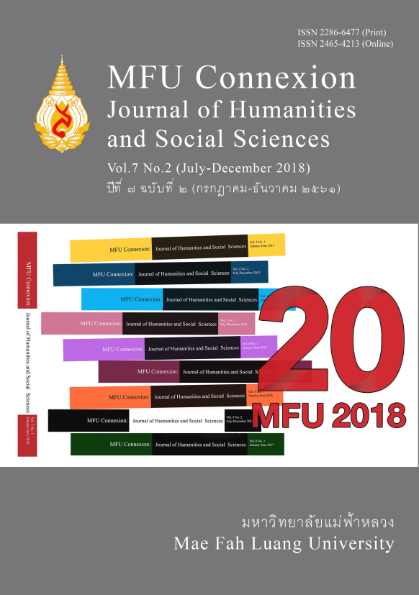Analytical study of Virtual Service Provider Office Management (VSPOM) Factors for Service Plan in the Regional Health Service in Thailand
Main Article Content
Abstract
This research aims to analyze VSPOM factors for service plan in the regional health service in Thailand. The research is descriptive, which uses structural relationship models. The samples used in the study were the following two groups: (1) 274 (90.13%) executives form 304 were selected purposively as conclusion criteria; and (2) 664 (81.07%) executives and practitioners from 819 were selected by multistage random sampling. The research tools were (1) executive questionnaire and (2) a Virtual Service Provider Office questionnaire, data were statistically analyzed by exploratory factor analysis (EFA) and second order confirmatory factor analysis (2nd Order CFA).
The research found that the variables model was composed of 10 factors from 74 selected variables as follows: (1) Resources, operational support, health services; (2) Developing academic subject; (3) General administration; (4) Culture of the organization; (5) Budget administration; (6) Organization philosophy; (7) Establishing and administrative in the health service virtualization; (8) Academic administration; (9) Personnel administration; and (10) Professional staff.
It can be concluded that 10 factors of variables model of the VSPOM for Service Plan in the Regional Health Service in Thailand had high construct validity by both exploratory and second order confirmatory factor analysis.
Article Details
Copyright
Connexion: Journal of Humanities and Social Sciences has an exclusive right to publish the accepted articles in any form. However, the author retains the following rights:
1. The right to the ownership of the article;
2. The right to use all or part of the article in his/her other works;
3. The right to re-produce the article for personal use or for use in the author’s organisation, in which case the author must obtain permission from Connexion: Journal of Humanities and Social Sciences;
4. The right to make copies of all or part of the work for educational use or for the author’s use in classroom teaching; and
5. The right to include the work (both the preprinted and printed versions) in an institutional repository.
References
Akaike, H. (1974) A new look at the statistical model identification, IEE Transactions on Automatic Control, vol. 19, no. 6, pp. 716-723.
Afsarmanes, H., & Camarinha, M. (2004) Processes and foundations for virtual organizations, Boston: Kluwer Academic Publisher.
Barrett, P. (2007) Structural equation modeling: Adjudging model fit, Personality and Individual Differences, vol. 42, no. 5, pp. 815-824.
Byrne, B. M. (1998) Structural equation modeling with LISREL, PRELIS and SIMPLIS: Basic concepts, applications and programming, Mahwah, NJ: Lawrence Erlbaum Associates.
Boonda, P., et al. (2014) ‘Developing an appropriate Virtual Service Provider Office Management Model for Service Plan in the Second Regional Health Service of Ministry of Public Health in Thailand’, in Proceedings of Second International Conference on Global Public Health 2014, pp. 54-59, 3-4 July 2014, Negombo, Sri Lanka.
Cochran, W. G. (1963) Sampling techniques, 2nd edition, New York: John Wiley & Sons.
Cochran, W. G. (1977) Sampling techniques, 3nd edition, New York: John Wiley & Sons.
Diamantopoulos, A. & Siguaw, J. A. (2000) Introducing LISREL, London: Sage Publications.
Faucheux, C. (1997) How virtual organizing is transforming management science, Communication of the ACM, vol. 40, no. 9, pp. 50–55.
Giuliano, V. E. (1982) The mechanization of office work, Scientific American, vol. 247, pp. 149–164.
Godden B. (2017) Sample size formulas, Available: https://williamgodden.com/samplesizeformula.pdf [26 May 2017]
Gupta & Jatinder, N. D. (1997) Association for Information Systems, Proceedings of the Americas Conference on Information Systems, pp. 417-419, 15-17 August 1997, Indianapolis.
Hiltz, S. (1986) The virtual classroom: Using computer mediated communication for university teaching, Journal of Communication, vol. 36, pp. 95–104.
Miles, J. & Shevlin, M. (1998) Effects of sample size, model specification and factor loadings on the GFI in confirmatory factor analysis, Personality and Individual Differences, vol. 25, pp. 85-90.
Hu, L. T. & Bentler, P. M. (1999) Cutoff criteria for fit indexes in covariance structure analysis: Conventional criteria versus new alternatives, Structural Equation Modeling, vol. 6, no. 1, pp. 1-55.
Isaca. (2001) Understanding virtual organizations, Available: https://www.isaca.org/Journal/archives/2001/Volume-6/Pages/Understanding-Virtual-Organizations.aspx [10 October 2014]
Kim, J.-O., & Mueller, C. W. (1978) Introduction to factor analysis: What it is and how to do it, Beverly Hills, CA: Sage Publications.
Malone, M. & Davidow, W. (1992) Virtual corporation, Forbes, vol. 150, pp. 102–107.
Olson, M. H. (1983) Remote office work: Changing work patterns in space and time, Communications of the ACM, vol. 26, no. 3, pp. 182–187.
Siddiqui, K. (2013) Heuristics for sample size determination in multivariate statistical techniques, World Applied Sciences Journal, vol. 27, no. 2, pp. 285–287. doi: 10.5829/idosi.wasj.2013.27.02.889
Steiger, J. H. (2007) Understanding the limitations of global fit assessment in structural equation modeling, Personality and Individual Differences, vol. 42, no. 5, pp. 893-898.
Tabachnick, B. G. & Fidell, L. S. (2007) Using multivariate statistics, 5th edition, New York: Allyn and Bacon.
Travica, B. (1997) ‘The design of the virtual organization: A research model’, in Proceedings of the American Conference on Information Systems, pp. 417-419.
Venkatesh, A. & Vitalari, N. (1992) An emerging distributed work arrangement: An investigation of computer-based supplemental work at home, Management Science, vol. 38, no. 12, pp. 1687–1706.
Wheaton, B., et al. (1977) Assessing reliability and stability in panel models, Sociological Methodology, vol. 8, no. 1, pp. 84-136.
Wright, S. (1934) The method of path coefficients. Ann. Math. Statist., vol. 5, no. 3, pp. 161-215. doi: 10.1214/aoms/1177732676


